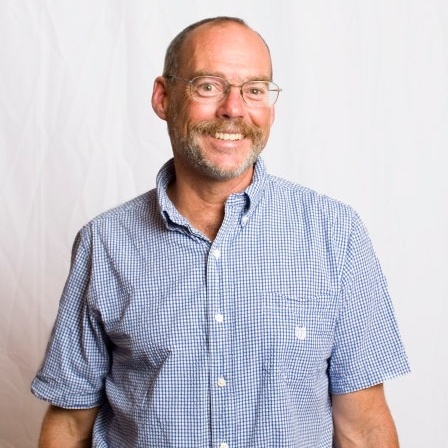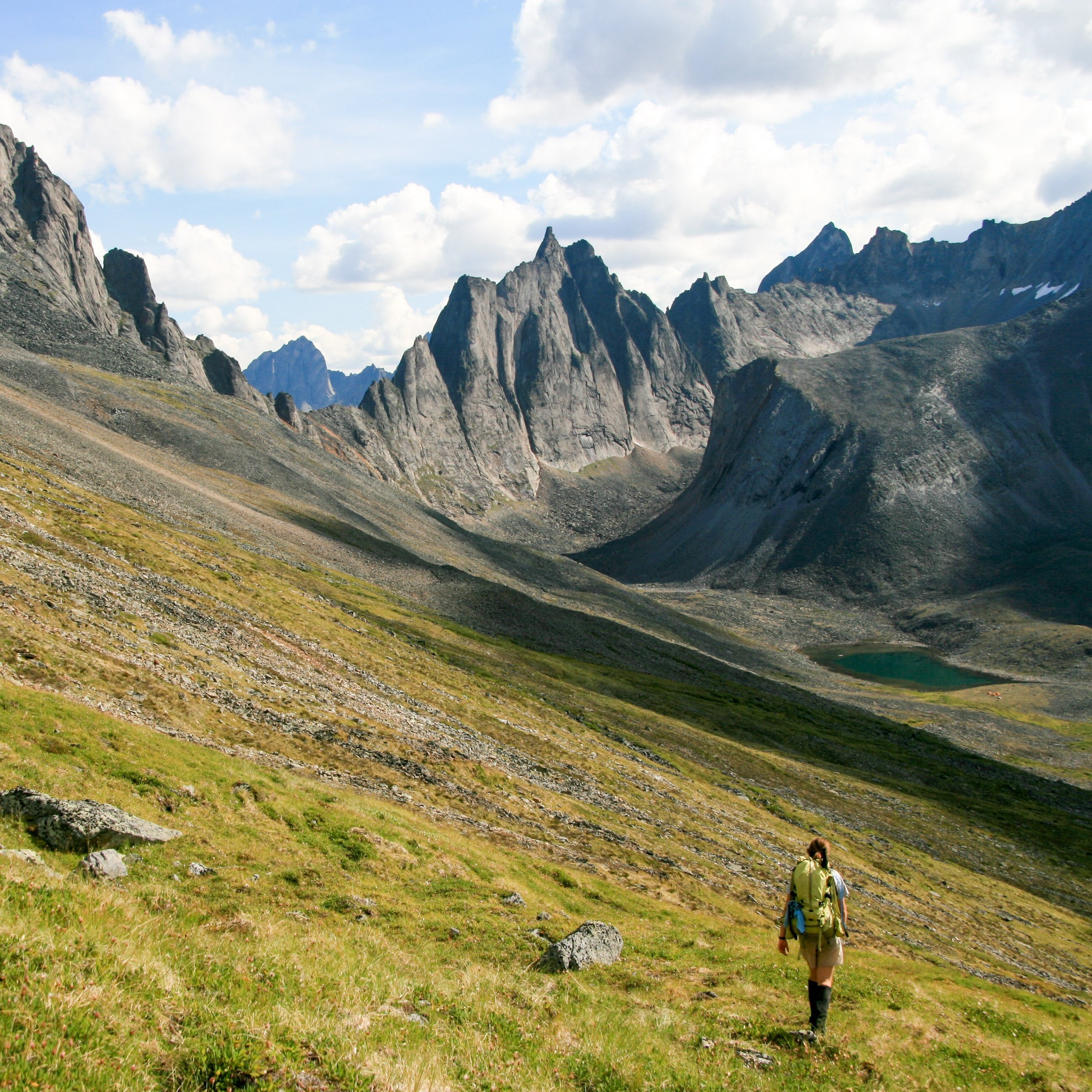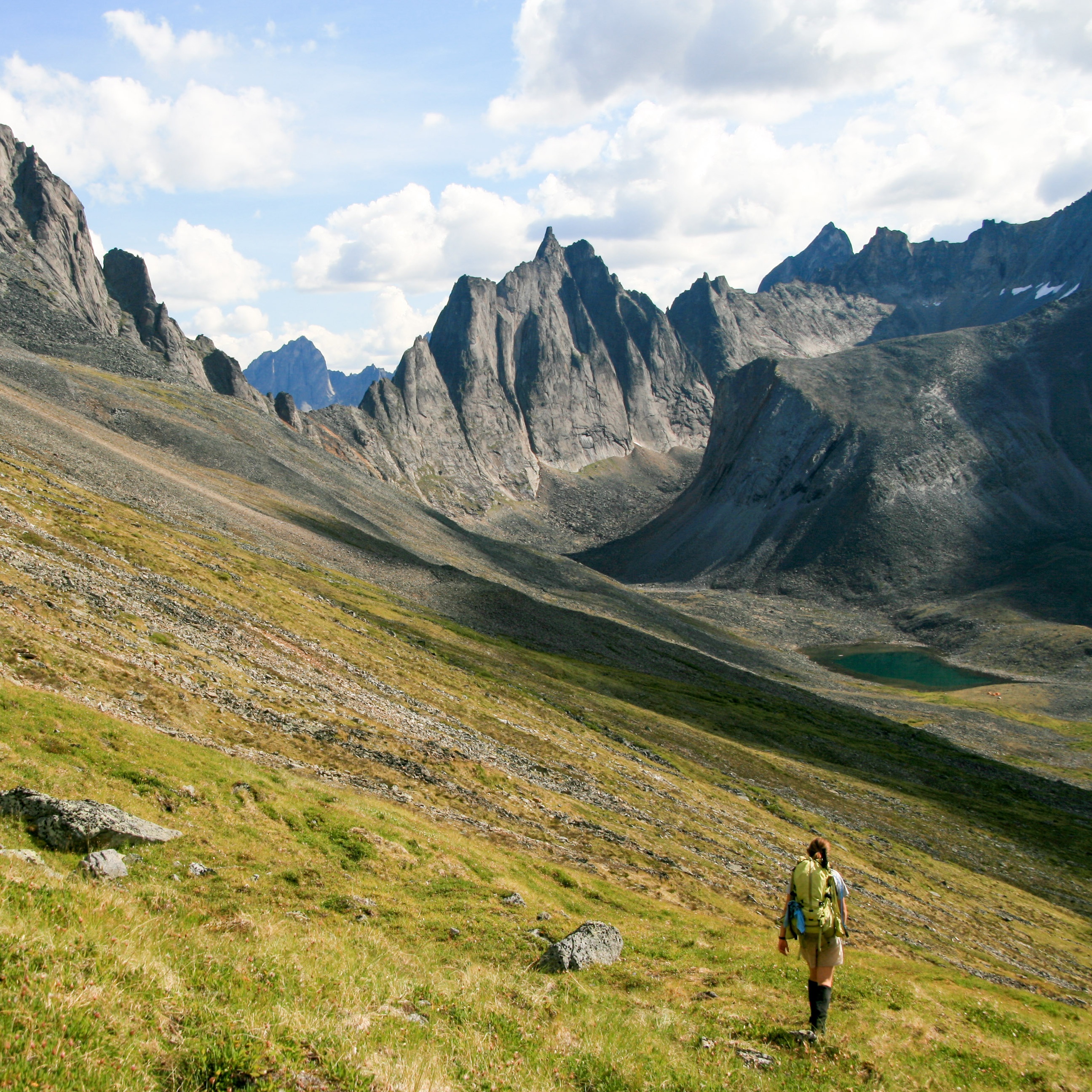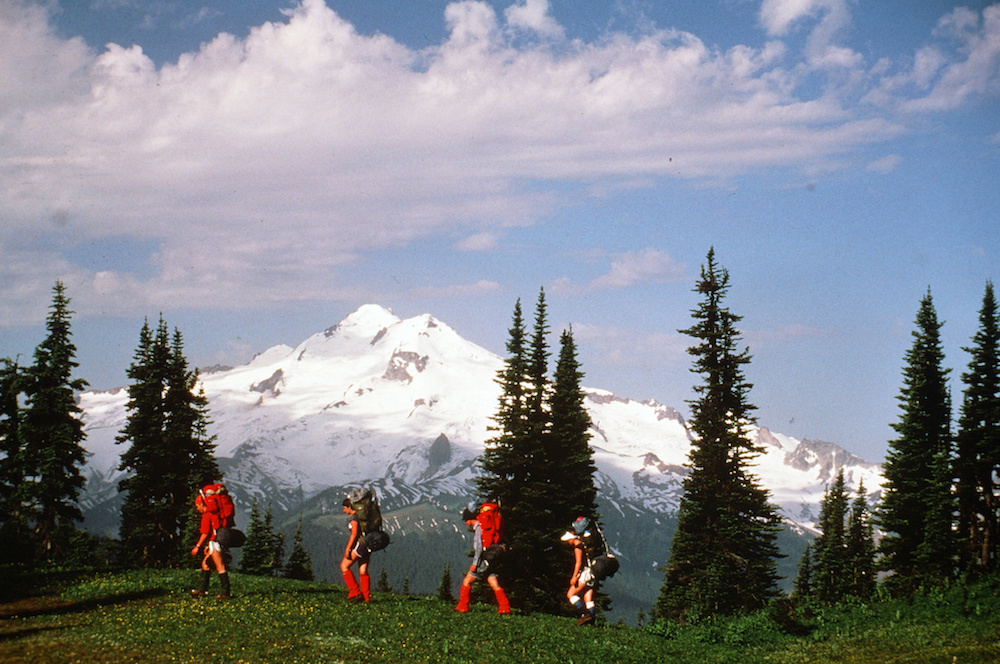
This is a tale from the early 1980s. Reagan was President, the internet and cell phones only a dream, and disco thankfully on its last legs. Two friends and I had recently learned wilderness medicine skills through an advanced first aid course, which was an early generation of the Wilderness First Responder (WFR).
Read along to see how you would react to a similar first aid situation today.
The Setting
It was on Day 1 of a planned 10-day hiking trip with two friends in the Rocky Mountains. The frosty late-August day presaged the change of season. The dampness, low gray clouds, and skiffs of snow were the remnants of yesterday’s wet snowstorm.
Our frame packs were heavy by modern standards, 60 pounds, yet we were enjoying the first generation synthetic clothing that had begun to replace heavy wool garments. This was cutting edge stuff!
As we moved through the forest at 10,000 ft. (3000 m), we noticed a tent pitched too close to the trail, with boots wet with snow and packs and gear scattered around. We silently reproached this breach of practical conservation practices (Leave No Trace was still in the future) and sloppy camping. A head popped out of the tent and asked if we could help their friend who was also in the tent and feeling sick. Of course we would!
SOAP Report
Subjective
The patient is a 42-year-old male whose chief complaint is weakness and lethargy. He had a long hard hike the day before and stopped mid-afternoon due to exhaustion and feeling ill. This morning he is too weak to hike.
Objective
The patient is inside a tent. He is dressed in damp clothing and lying in a damp sleeping bag. The patient and his companion deny any recent injury mechanism and a head-to-toe exam does not find any sign of injury. The patient is alert and oriented, but lethargic and slow to respond. He is pale and looks ill.
Vital Signs
|
Time |
11:00 a.m. |
11:30 a.m. |
|
Level of Responsiveness (LOR) |
A+Ox4 |
A+Ox4 |
|
Heart Rate (HR) |
100, weak, regular |
100, weak, regular |
|
Respiratory Rate (RR) |
18, easy, regular |
18, easy, regular |
|
Skin Color, Temperature, Moisture (SCTM) |
pale, warm, moist |
pale, warm, moist |
|
Blood Pressure (BP) |
radial pulse present |
radial pulse present |
|
Pupils |
Pupils equal, round, responsive to light (PERRL) |
Pupils equal, round, responsive to light (PERRL) |
|
Temperature T° |
Skin warm (not hot) to touch |
Skin warm to touch |
History
|
Symptoms: |
Weakness, lethargy. Companion states that the patient usually has more mental and physical energy. The patient denies shortness of breath or headache. |
|
Allergies: |
Denies. |
|
Medications: |
“Water pill” for high blood pressure, an unknown medication for high blood sugar. Neither medication can be found. |
|
Pertinent Hx: |
The patient has a history of high blood pressure. He denies having chest pain. The patient says his blood sugar levels run high but denies any treatment for diabetes. |
|
Last in/out: |
The patient states he drank 3 liters of water yesterday and a “cup or two” today. He did not eat dinner last night, had only had snack food this morning, and has no appetite. He has not had a bowel movement in 24 hours and describes his urine as yellow, not dark. |
|
Events: |
The patient flew from sea level to 5000 ft. (1500 m) 48 hours ago, then drove the same day to a trailhead at 8000 ft. (2400 m). Yesterday he hiked in a wet snowstorm 6 miles (10 km) and over a 11,200 ft. (3400 m) pass to their present location at 10,000 ft. (3000 m). He stopped early yesterday afternoon due to fatigue. |
STOP READING!
What is your assessment and plan? Take a few minutes to figure out your own assessment and make a plan. Don’t cheat—no reading on without answering this first!
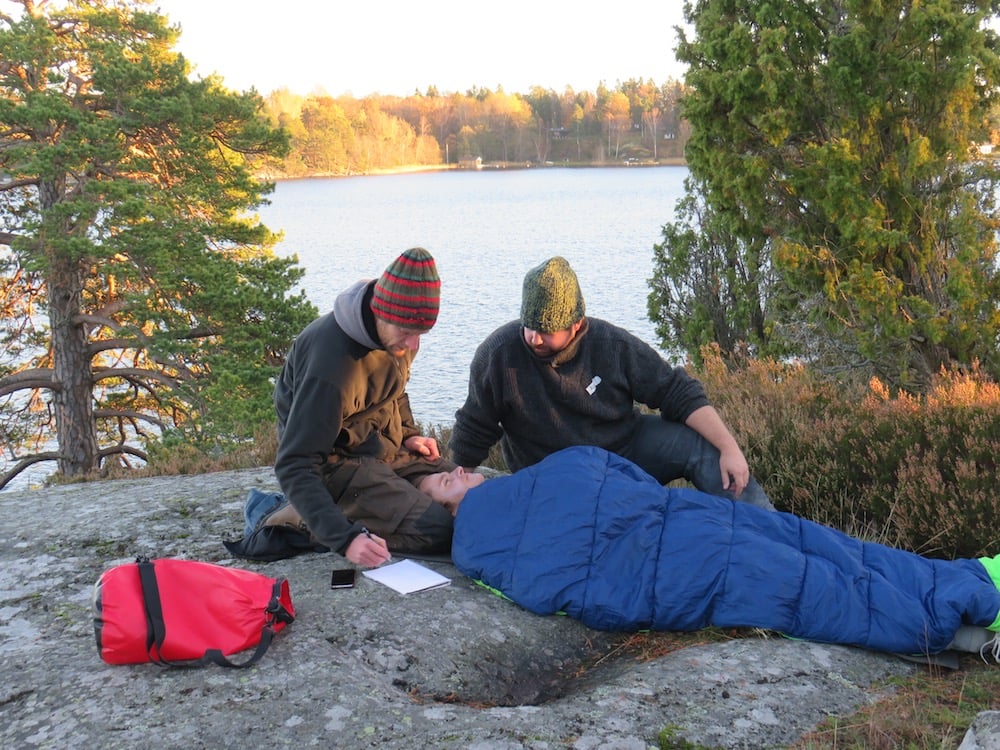
Assessment
- Fatigue
- Altitude illness
Plan
- Get the patient in warm, dry clothing. Attempt to feed and hydrate the patient.
- Move to a lower altitude campsite.
- Try to get more clarity on medical history.
- If the patient does not improve, send two people to call for help.
Anticipated problems
- Patient is unable to walk.
- Altitude illness worsens.
Notes from NOLS on Treating This Patient
The patient’s high blood pressure and blood sugar medications suggest he may have significant medical history, but the vague information given by the patient is not helpful. There is no immediate crisis; the recent events point to exhaustion, dehydration, and altitude illness. Treatment should include moving to a lower altitude. If the situation evolves, as these things often do, the patient's exhaustion and mindset may suggest that he should not stay in the mountains.
The Story Continues...
We built a fire to dry the patient’s clothing, cook a meal, and warm the spirits of the patient and his companion. The patient drank some hot cocoa but didn't eat much. Over the next hour he perked up a bit, but remained weak and lethargic. We were unable to obtain any more details on his medical history other than a denial of recent hospitalizations. Walking to the trailhead did not seem realistic, but we thought it was important to descend to a lower elevation. We convinced the patient and his companion that they should go down, and we would help.
At 1:30pm we had their camp gear packed into our packs, which were now quite heavy, and started down the trail. It was a slow, tedious 3 hours and 2 miles before we were at 8400 ft. (2500 m). At this point the patient said he was exhausted and unable to continue. His vital signs and physical appearance were unchanged. He had no shortness of breath, normal mental status, complained of being dizzy, but was able to walk. He urinated clear urine twice during the hike.
Our plan at this point was for two of our group to continue 4 miles (6.5 km) to the trailhead, drive to find a phone to call local authorities (remember, cell phones didn’t exist yet), see what help we could get, and then return to this camp. We didn’t even think about helicopter evacuation, since that wasn’t as available an option in the early '80s. We anticipated help would not arrive until the next day.
As luck would have it, a couple of horsepackers came by and offered to give the patient a ride to the trailhead. The patient eagerly accepted. We accompanied them to the trailhead, barely keeping up with the horses. At the trailhead, the patient seemed much improved. He thanked us for our help and was driven away by his companion.
We were left scratching our heads over the experience and never did hear anything about the patient or their recovery.
Notes from NOLS on Ambiguous Wilderness Medicine Incidents
The list of possible diagnoses for this patient included at least exhaustion, dehydration, acute mountain sickness, diabetic complications, and a simple inability to cope with the tough travel conditions and adversity in the mountains. The rescuers did a patient assessment and identified and managed the simple, obvious problems of staying warm, dry, hydrated, and fed. They also descended to a lower altitude, a critical intervention if this patient was indeed experiencing altitude illness. This incident wasn't a dramatic or complicated medical emergency, but rather it required simple first aid, wilderness skills, leadership, and self-sufficiency—key ingredients of wilderness medicine.
- Wilderness First Responder
- First Aid
- Altitude Illness
- Case Studies
- Wilderness Medicine
- Illness & Injuries
Written By
Tod Schimelpfenig
As a NOLS Instructor since 1973 and a WEMT, volunteer EMT on ambulance and search and rescue squads since the 70s, Tod Schimelpfenig has extensive experience with wilderness risk management. He has used this valuable experience to conduct safety reviews as well as serve as the NOLS Risk Management Director for eight years, the NOLS Rocky Mountain Director for six years, and three years on the board of directors of the Wilderness Medical Society, where he received the WMS Warren Bowman Award for lifetime contribution to the field of wilderness medicine. Tod is the founder of the Wilderness Risk Manager’s Committee, has spoken at numerous conferences on pre-hospital and wilderness medicine, including the Australian National Conference on Risk Management in Outdoor Recreation, and has taught wilderness medicine around the world. He has written numerous articles on educational program, risk management and wilderness medicine topics, and currently reviews articles for the Journal of Wilderness and Environmental Medicine. Additionally, he is the author of NOLS Wilderness Medicine and co-author of Risk Management for Outdoor Leaders, as well as multiple articles regarding wilderness medicine. Tod is the retired curriculum director for NOLS Wilderness Medicine and is an active wilderness medicine instructor


